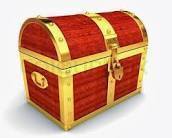Switzerland

Basic Data:
-
Country ISO Code: CH
-
Official Language: German
-
Language ISO Code: de
-
Current Official Currency: Swiss Franc
-
Current Currency ISO Code: CHF
Complete Financial History of the Swiss Franc (Schweizer Franken):
Current Official Currency: Swiss Franc (CHF)
-
Currency ISO Code: CHF
-
Designs / Symbols: Coins feature the Swiss coat of arms, the Swiss cross, and alpine motifs; banknotes depict cultural, scientific, and historical Swiss figures, along with signatures of the President and Vice President of the Swiss National Bank. Common symbols include "Fr.", "SFr.", and "CHF".
-
Singular Name: Franc
-
Plural Name: Francs
-
Monetary Subdivision: 1 franc = 100 rappen
-
Fraction Name Singular: Rappen
-
Fraction Name Plural: Rappen
-
Initial Production Date: 1850
-
End Production Date: still in circulation
-
Initial Circulation Date: 1850
-
End Circulation Date: still in circulation
-
Mint: Swissmint (Swiss Mint), Bern
-
Issuing Bank: Swiss National Bank (Schweizerische Nationalbank)
-
Coin Denominations Currently Minted: 5, 10, 20 rappen; ½, 1, 2, and 5 francs
-
Banknote Denominations Currently Issued: 10, 20, 50, 100, 200, and 1,000 francs
Historical and Economic Context:
-
Prior to 1850, Switzerland had a wide variety of local and foreign coins in circulation, with over 800 different types causing monetary confusion.
-
The 1848 Federal Constitution centralized the right to issue currency, and the 1850 Federal Coinage Act established the Swiss franc as the official currency, unifying the monetary system.
-
The first coins were initially minted in Paris, Strasbourg, and Brussels before the Swiss Mint in Bern began production in 1853.
-
From 1865 to 1927, Switzerland was part of the Latin Monetary Union, allowing gold and silver coins from France, Belgium, Italy, Greece, and Switzerland to circulate interchangeably.
-
The franc was pegged to gold until 1936, when it was devalued by about 30% due to the global economic crisis.
-
The Swiss National Bank was founded in 1907, taking over note issuance and monetary policy, strengthening currency stability.
-
After World War II, the franc was pegged to the US dollar until the Bretton Woods system ended in 1973, after which it floated freely.
-
The Swiss franc is globally recognized as a stable and “safe haven” currency during political and economic instability.
Mints and Production Locations:
-
Swissmint in Bern is the central mint.
-
Early coins were minted in Paris (mint mark A), Strasbourg (AB, BB), and Brussels (B).
Designs of Coins and Banknotes:
-
Coins feature the Swiss cross, Helvetia, alpine motifs, and the Swiss coat of arms.
-
Banknotes depict prominent Swiss personalities, cultural and scientific symbols, and bear official signatures of the Swiss National Bank’s president and vice president.
Print Runs, Quantities, Honorees, and Seals:
-
Swissmint regularly issues circulation and commemorative coins honoring national events, personalities, and cultural heritage.
-
Banknotes are issued in series with official signatures.
Curiosities and Commemorative Coins:
-
Commemorative gold and silver coins are minted for anniversaries and special occasions.
-
The Swiss franc is also the official currency of the Principality of Liechtenstein.
Current Circulation Status:
-
The Swiss franc has been the official currency of Switzerland since 1850 and remains in continuous circulation.
Issuing Authority:
-
The Swiss National Bank is the sole official issuer of banknotes and responsible for monetary policy.
Relevant Monetary Legislation:
-
Federal Coinage Act of May 7, 1850, establishing the Swiss franc as the official currency.
-
1848 Federal Constitution assigning exclusive currency issuance rights to the federal government.
Names and Positions of Banknote Signatories:
-
Banknotes bear signatures of the President and Vice President of the Swiss National Bank.
Persons Honored on Coins and Banknotes:
-
Banknotes and coins honor notable Swiss figures from culture, science, and history, such as writers, artists, and scientists.
Summary of Coins and Banknotes Currently in Circulation:
| Type | Denominations in Circulation |
|---|---|
| Coins | 5, 10, 20 rappen; ½, 1, 2, 5 francs |
| Banknotes | 10, 20, 50, 100, 200, 1,000 francs |
This report provides a comprehensive overview of the Swiss franc’s history, highlighting its origin, evolution, economic stability, minting, and current status as Switzerland’s official currency.
 Nilton Romani
Nilton Romani
